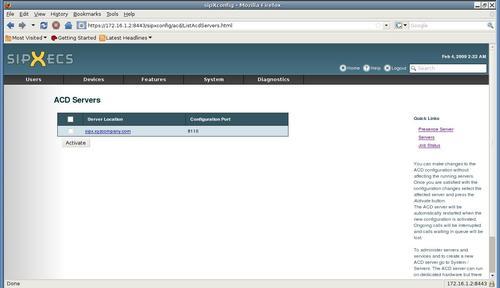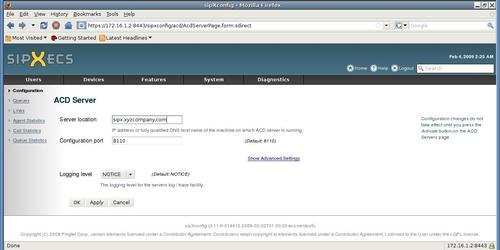The ACD Service can be configured by selecting the ACD Call Center menu item under the Features menu. The ACD Servers page will be displayed showing the server name as seen here:

Clicking on the server name hyperlink reveals the ACD Server page as shown in the following screenshot:

The Show Advanced Settings hyperlink near the center of the page causes some advanced configuration options to be displayed. These settings, as shown in the following screenshot, typically do not need to be modified for most installations.

The ACD Queue configuration determines how calls are answered by the queue, what callers hear for announcements, how calls are handed out to agents of the queue and what happens when the call is completed. Any number of different queues can be configured to handle calls to individual departments differently.
Before beginning to configure the ACD Queues, refer to the information prepared in the planning phase from the ACD Queues section...



